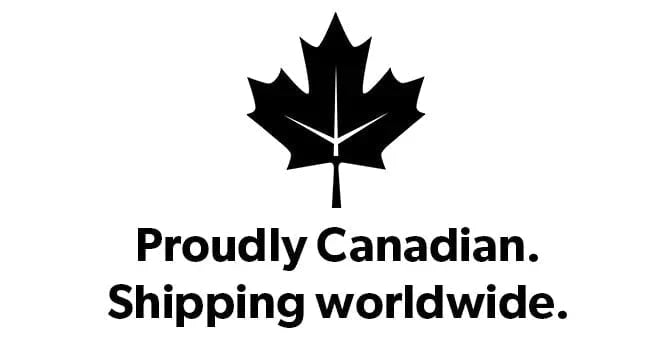Vaughn Ventus SLR3 Youth Goalie Leg Pads - USED 22+2
- 0 left in stock
Free Shipping Over $200

Fast Easy Returns

Best Price Promise
Intro & New Features
The SLR3 Youth goalie leg pads from Vaughn. These pads build on the previous SLR2 with the modern look, simple strapping, QuickSlide sliding surface, and bungee cord toe ties. The SLR3 lets young goalies try their hand at goaltending while enjoying the same feel and tech that high-level goalies experience.
External Material
Vaughn used classic jenpro synthetic leather on the exterior of the pads, a common option in goalie pad manufacturing due to its water resistance and durability. In addition, the pads have been outfitted with Vaughn’s own QuickSlide, renowned among many elite and professional goalies for its unparalleled glide along the ice. Growing goalies will greatly benefit from and enjoy the speed that QuickSlide offers when down on the ice.
Internal Construction
The core of the SLR3 Junior leg pads is made entirely of HD foam for good protection and seamless performance. One of the main focuses of the SLR3 series centres around rebound management, a skill that goalies at all levels—from youth to pro—are constantly trying to master. The SLR3 leg pads’ core gives them strong pop on the rebounds, making that mastery easier to reach by simplifying directing rebounds away from the net.
Pad Break
The pads are pre-curved with no break, which means they are stiffer but curved to fit developing goalies, specifically those who go down into butterfly often. The curve enhances seal along the ice, meaning it will be tougher for rogue pucks to trickle past when they aren’t looking or if they lose track of the puck.
Boot Angle & Toe Taper
The SLR3 sits at a 60° boot angle with a 90° toe taper. The toe taper ensures good coverage, whether standing or in butterfly. The boot angle positions the pad a little higher on the skates, making them appear taller. The boot angle and coverage also help greatly with rebound control.
Knee Cradle
The knee cradle is wide for enhanced pad rotation (the motion made when the goalie is entering into butterfly). The angled adjustment strap is there to keep the pads snug while not sacrificing range of motion. It is important for young goalies to get a handle at pad rotation early, as over or under-rotation can cause pucks to slip through cracks or potential injury later down the road as they grow older. The SLR3 pads are optimized to help develop this skill.
Strapping
In addition to the knee cradle, proper strapping will always be important to pad rotation. The straps on the SLR3 are simplified with velcro and are even easier to adjust in a pinch. Vaughn also doesn’t neglect the younger generation when it comes to toe ties, which is one of if not the most important piece of equipment to help with rotation. Toe ties determine the depth of the rotation, thus having good toe ties will also dictate a goalie’s pad rotation effectiveness. For the SLR3, Vaughn opted for bungee toe ties.
Intro & New Features
The SLR3 Youth goalie leg pads from Vaughn. These pads build on the previous SLR2 with the modern look, simple strapping, QuickSlide sliding surface, and bungee cord toe ties. The SLR3 lets young goalies try their hand at goaltending while enjoying the same feel and tech that high-level goalies experience.
External Material
Vaughn used classic jenpro synthetic leather on the exterior of the pads, a common option in goalie pad manufacturing due to its water resistance and durability. In addition, the pads have been outfitted with Vaughn’s own QuickSlide, renowned among many elite and professional goalies for its unparalleled glide along the ice. Growing goalies will greatly benefit from and enjoy the speed that QuickSlide offers when down on the ice.
Internal Construction
The core of the SLR3 Junior leg pads is made entirely of HD foam for good protection and seamless performance. One of the main focuses of the SLR3 series centres around rebound management, a skill that goalies at all levels—from youth to pro—are constantly trying to master. The SLR3 leg pads’ core gives them strong pop on the rebounds, making that mastery easier to reach by simplifying directing rebounds away from the net.
Pad Break
The pads are pre-curved with no break, which means they are stiffer but curved to fit developing goalies, specifically those who go down into butterfly often. The curve enhances seal along the ice, meaning it will be tougher for rogue pucks to trickle past when they aren’t looking or if they lose track of the puck.
Boot Angle & Toe Taper
The SLR3 sits at a 60° boot angle with a 90° toe taper. The toe taper ensures good coverage, whether standing or in butterfly. The boot angle positions the pad a little higher on the skates, making them appear taller. The boot angle and coverage also help greatly with rebound control.
Knee Cradle
The knee cradle is wide for enhanced pad rotation (the motion made when the goalie is entering into butterfly). The angled adjustment strap is there to keep the pads snug while not sacrificing range of motion. It is important for young goalies to get a handle at pad rotation early, as over or under-rotation can cause pucks to slip through cracks or potential injury later down the road as they grow older. The SLR3 pads are optimized to help develop this skill.
Strapping
In addition to the knee cradle, proper strapping will always be important to pad rotation. The straps on the SLR3 are simplified with velcro and are even easier to adjust in a pinch. Vaughn also doesn’t neglect the younger generation when it comes to toe ties, which is one of if not the most important piece of equipment to help with rotation. Toe ties determine the depth of the rotation, thus having good toe ties will also dictate a goalie’s pad rotation effectiveness. For the SLR3, Vaughn opted for bungee toe ties.
| Vaughn Ventus Youth Goalie Pads Sizing Chart | ||
|---|---|---|
| Leg Pad Size | Floor-to-Knee Measurement | |
| 22” | 11.5" - 12.5" | 29.3 cm - 31.9 cm |
| 24” | 12.5" - 13.5" | 31.9 cm - 34.4 cm |
| 26” | 13.5" - 14.5" | 34.4 cm - 37.0 cm |
Goalie Leg Pads Sizing
Deciding your Goalie Pads size is crucial for having total control while moving in the crease. Sizing your pads properly is the difference between getting that perfect seal on your butterfly, and feeling clunky or unprotected in the net. Below we have compiled some information to better assist you in deciding which size is right for you.
Floor-To-Knee Measurement
Your Floor-To-Knee measurement will give you a good indication as to what "Pad Size" you will need. This measurement can be matched up with the provided sizing chart above.
How to Measure your Floor-To-Knee
- 1. In your bare feet, place the soft measuring tape at the inside of the bottom of your foot.
2. Slightly bend your knee.
3. Run the soft measuring tape up your shin, to the middle of your knee.
4. Match your Floor-To-Knee measurement with the provided sizing chart
What to look for when trying on your new pads.
Once you have your new leg pads, you’ll need to make sure they fit you properly. To do so, you’ll need to put the pads on with your skates. There a couple things to do to check size, once you have the pads on:
1. Stand straight and bring your feet together. This will show you the overall height of the pad, while on. Your pads should not be taller than your hips. Ideally you want the top of your pad at the half-way point of your thighs. A pad fitted for a young growing goaltender can be a little taller, so a little above the half-way point is normal.
2. Next you want to get in your stance, keep your hands in a ready position, and drop to your butterfly. Without moving your legs to correct your butterfly, bring your heels together. This is where you assess your knee position. For a proper fit, you want the middle of your knee to sit directly on the center of the knee stack. If you’re looking for growing room, you want the middle of your knee to land roughly 1.5” below the center of the knee stack (1” for JR).
Not getting a complete seal while in your butterfly?
If you're having trouble getting a full seal in your new pads, it may be the way you’re strapping them up. Make sure your boot strap and top straps (above knee) are loosened up a bit. The reason you want these straps loose is because they have a direct effect on the rotation of the pad. Having a loose boot strap makes it easy for your foot and ankle to rotate as the pad moves. Same goes for the top straps, as you don't want them pulling down too hard on the thigh rise.








